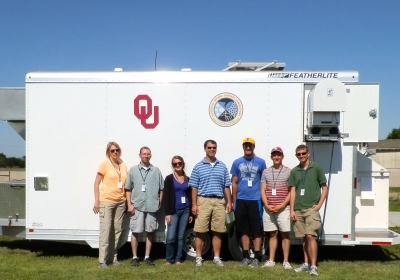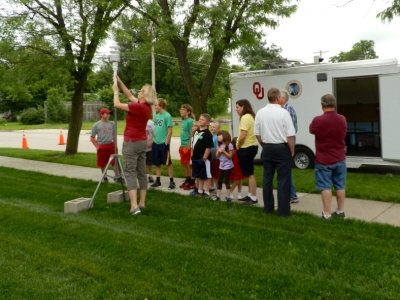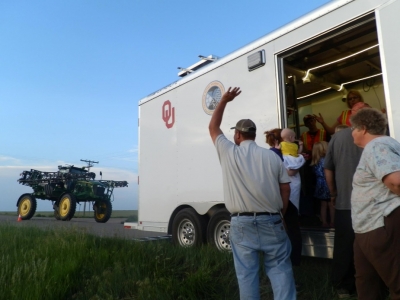Editor’s Note: Ben Toms, intern from University of Oklahoma for the Plains Elevated Convection at Night (PECAN) field campaign, sent this update.

This past week, members of the University of Oklahoma (OU) and National Severe Storms Laboratory’s (NSSL) Boundary Layer Integrated Sensing and Simulation (BLISS) research team embarked on a seven-week long field campaign, PECAN. Principal investigator Dave Turner, NSSL, is directing the team in studying mesoscale convective systems, convective initiation, lower-atmosphere gravity waves, and low-level jets. The Collaborative Lower Atmosphere Mobile Profiling System (CLAMPS) facility is the centerpiece of the team’s involvement within PECAN and will carry a Doppler wind lidar, atmospheric emitted radiance interferometer, and microwave radiometer. The atmospheric emitted radiance interferometer and microwave radiometer instruments will sample vertical profiles of thermodynamic variables, while the Doppler wind lidar will offer insight into the kinematic environment above the facility.

Prior to the official start of the field campaign, June 1, we were all actively engaged in public relations activities. A part of this included the team stopping in Hesston, Kansas, on May 28 at the local library to discuss details of the PECAN mission with local residents. Over 40 Hesston residents were highly interested in the field campaign! I think partly because of the fixed PECAN Integrated Sounding Array (PISA) site is located in town, but also stemming from emotions relating to the tornado that struck the town in 1990. The public relations activities continued on Saturday with the comprehensive PECAN public relations day at Hays Regional Airport when an estimated 290 residents of Hays and surrounding towns toured the PECAN facilities. We were all really excited about the interest that the community is showing! We considered the public relation missions successful on all fronts as both fellow atmospheric scientists and the residents were shown the CLAMPS facility. The team received resoundingly positive feedback on facility design, team personnel, and field campaign objectives.

Although public relation events were intended to end with the Hays Regional Airport event, we found ourselves presenting the trailer and weather balloon release procedures to residents on the first “shakedown” intensive observational period on June 1. We can’t help it when there’s an obvious interest! An incredible low-level jet was sampled, with a low-level wind maximum of 47 knots. Students within the BLISS team will be utilizing the low-level jet data for both master theses and doctorate dissertations, so successful missions are essential to the extended success of the team.
Mesoscale convective systems—large complex thunderstorms lasting for hours—and atmospheric gravity wave missions occurred on the following two nights, of which both were met with frustration yet partial success. The mesoscale convective system did not form as forecasted, and the bore on June 4 was interfered with by a developing mesoscale convective system to the west of the CLAMPS deployment location. This mesoscale convective system also chased the team away from their original deployment location, which led to the operations center ending the mission hours early because of lightning concerns. These missions highlighted the necessity to study these phenomenon to better understand how to predict them and how they influence the ambient atmosphere.
An active weather pattern will continue throughout the next few weeks, which is great news for PECAN. We have learned from the first mesoscale convective system and bore missions and are ready to get back out there and try again!

